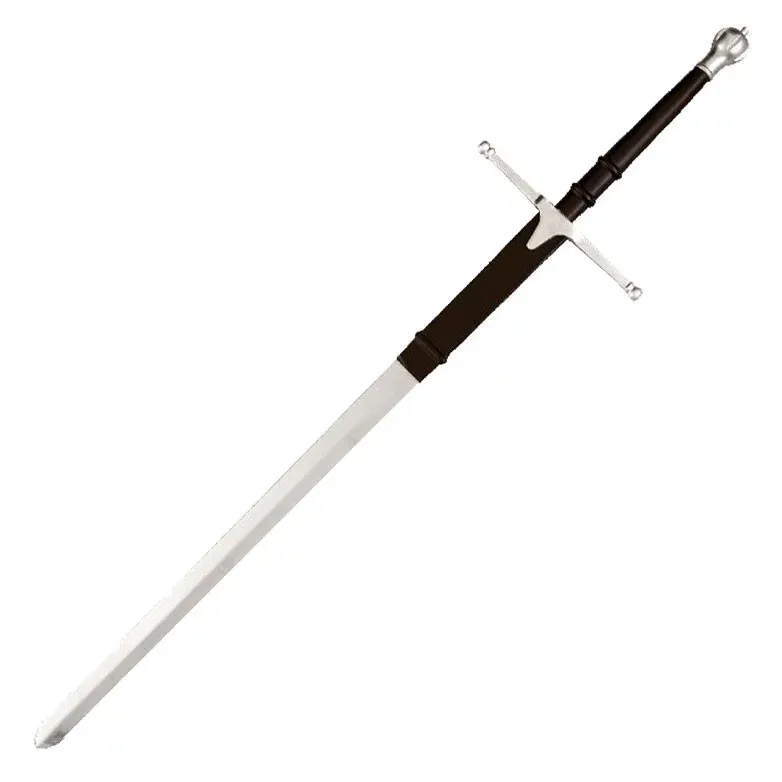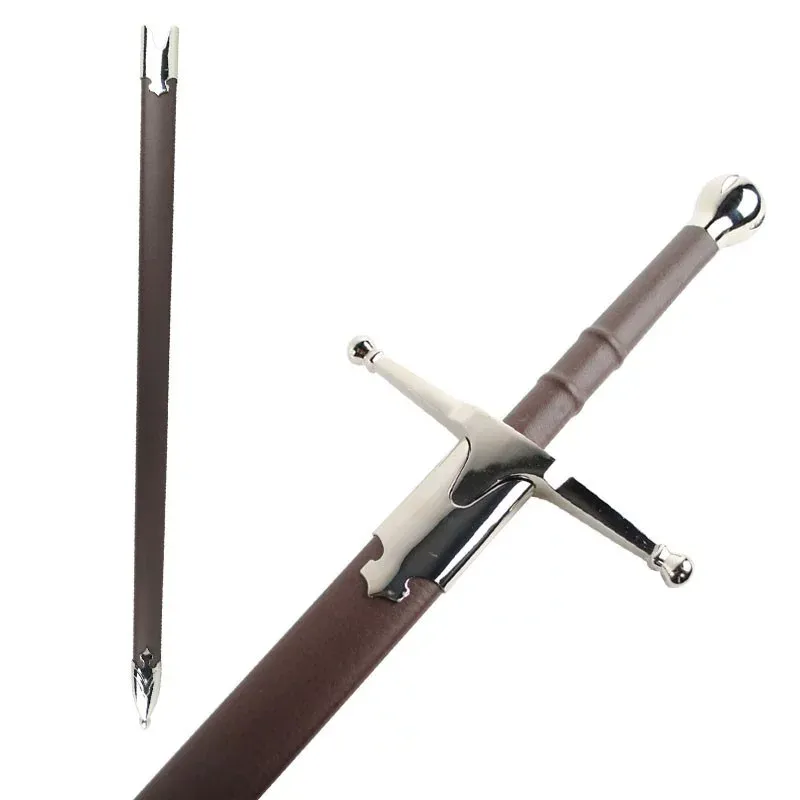What is a Two-Handed Sword?
The two-handed sword is an iconic weapon that stands out not only for its impressive size and weight but also for the skill and strength required to wield it. This type of sword has captured the imagination of many throughout history, serving as a symbol of power and prowess on the battlefield. We will explore its distinctive characteristics, historical context, and how it is valued today.
Characteristics of the Two-Handed Sword
- Weight and Dimensions: The two-handed sword is notable for its impressive size, which can weigh up to 4 kg and measure between 2 and 2.5 meters in length.
- Grip: The grip of this sword takes up a fifth or fourth of its total length, equipped with a cross guard and long quillons to protect the user's hands. The pommel, which is usually spherical or round, facilitates the rotation of the left wrist, allowing for quick and effective strikes and thrusts.
- Blade: Designed to be formidable, the blade of the two-handed sword is long and wide, made to pierce and strike through plate armor and chainmail. Although penetrating armor is not always possible, the impact can cause severe injuries such as fractures.
Historical Use of the Two-Handed Sword
- Time and Place of Use: This type of sword became popular in the Middle Ages, particularly during the 15th and 16th centuries. It was primarily used in foot combat, where weight and length played a crucial role in its effectiveness.
- Main Objective: Its robust design aimed to break the lines of armored pikemen, allowing cavalry units to exploit the chaos to advance in combat.

Current Uses of the Two-Handed Sword
- Collecting and Decoration: Today, the two-handed sword is highly valued in the collecting world for its historical and aesthetic worth. It is frequently used in decoration, as well as in historical reenactments, films, and plays that seek to capture the essence of medieval battles.
Historical Example: The Sword of William Wallace
An iconic two-handed sword is that of William Wallace, the 13th-century Scottish leader. Recognized for its considerable size, with a blade over one and a half meters long, it required both hands to wield, making it ideal for close combat. When wielding it, one hand was placed on the grip while the other could be positioned over the first third of the blade to improve control in short-range attacks.

Although it is no longer used in modern combat, the two-handed sword remains a culturally significant and evocative piece of a warrior past, making it an eternal point of interest for historians and enthusiasts alike.
















